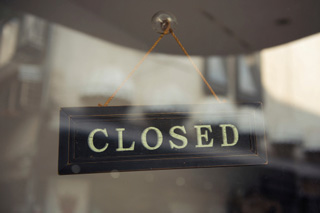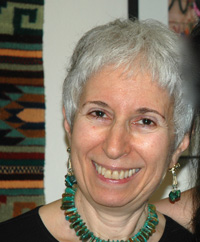The Parting Glass
In 2009 when the board and staff of the Paul Rapoport Foundation decided to spend out in five years, we focused initially on conveying our decision to our grantees with total transparency. We then looked to develop effective guidelines, assist applicants in creating strong grant applications, and work with grantees to develop viable exit strategies once our final multi-year grants concluded. We were so focused on these activities that we were all taken by surprise when we realized it was 2014 and that our grantmaking was actually completed. After 27 years of supporting all of the major organizations in New York’s lesbian, gay, transgender and bisexual (LGTB) communities—providing start-up funding to many, ongoing general operating support to many more, and essential infrastructure development in our final spend-out period—the actual closing date was upon us.
Throughout the preceding decades the Foundation’s board and staff had engaged a number of excellent organizational consultants to help us with strategic planning, including during our final spend-out decision. All of them—either formally or informally—reached out to us to urge us to plan for some sort of closure, not just for board and staff, but for all our grantees as well. So while we had had this idea in the back of our minds during the spend-out process, when we realized that our closing was imminent, the desire to hold some final event for the community suddenly became vitally important to us as a way to deal with the harsh realities of closing.

We chose to hold a farewell event to which all of our grantees over the past 27 years would be invited and we specifically reached out not only to current grantee staff, but to those former grantee staff members who had worked so closely with us to develop successful grant proposals in the early years of the LGTB community’s growth. We also invited fellow grantmakers from private and public funding sources, who had traveled with the Foundation on its journey from the early days when we were one of very few foundations funding AIDS programs in New York, to our final years of making grants specifically to organizations serving LGTB communities of color. And, of course, we invited our former board members who had worked so thoughtfully and so hard to create the Foundation and its funding strategies over the years.
We also realized that the history of the Foundation’s funding tracked the development of the LGTB community in New York, and thus we decided to create an illustrated timeline highlighting the important developments of our community over the past three decades. This allowed us to show how closely the Foundation had monitored these community developments and had adjusted our grantmaking strategies to support the community’s changing needs. This publication, which included dozens of grantee photographs, showcased the vast majority of our grantees and served as our souvenir program for the event.
The event we decided upon was a “cocktail party” held in an inviting rooftop garden setting that allowed folks to sit and reconnect with colleagues they may not have seen in decades while also saying “good-bye” to the Foundation; throughout the entire evening the same refrains were repeated over and over: “Oh my goodness, I haven’t seen you since….” “I can’t believe it…is that…?”
The evening clearly underscored the important role our grantee organizations had in the development of the LGTB communities in New York and allowed the Foundation to thank its grantees, as well as our terrific board members, past and present, for the wonderful work they had done for so many years. We also announced the Foundation’s “legacy grant”—to Equal Justice Works—during our formal program that evening and invited one of the first recipients of this Paul Rapoport Fellowship, a young LGTB lawyer of color, to describe the work he would be doing over the next two years in public interest law. This ongoing fellowship will continue to keep Paul Rapoport’s name alive in the LGTB community for several more decades, while also providing much-needed legal advocacy to highly underserved communities of color.
Looking back I would say that the outpouring of good wishes on all sides that night made the otherwise painful Foundation closure into a proud and happy occasion, and allowed us to close our doors on an ebullient note.
This is the twenty-third post in the "Making Change by Spending Down" series, produced in partnership by The Andrea and Charles Bronfman Philanthropies and GrantCraft. Please contribute your comments on each post and discuss the series on twitter using #spenddown. See related content below for more posts in this series.

